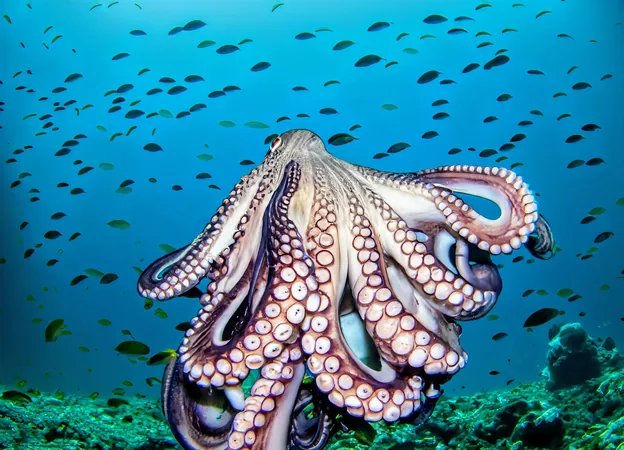
Harnessing the Power of Octopus Arms to Create Advanced Human-Like Robots
2024-11-12
Author: Arjun
Introduction
A groundbreaking new study is propelling us toward the long-anticipated dream of “cyberoctopus” robots, inspired by the incredible mechanics of octopus arms. This research not only sheds light on the fascinating biology of these cephalopods but also offers a blueprint for creating more sophisticated robots that could transform various industries.
The Unique Design of the Octopus
The octopus has intrigued scientists for decades due to its unique and versatile design. With a distributed neural network, each of the octopus's eight arms can operate independently, allowing for remarkable dexterity and control. This characteristic has made the octopus a model for engineers looking to develop robots that can perform complex tasks in unstructured environments.
Research Team and Objectives
Led by a talented research team from the University of Illinois Urbana-Champaign, including PhD candidate Arman Tekinalp and Professors Prashant Mehta and Mattia Gazzola, the study aims to understand how to control complex systems with numerous degrees of freedom without the need for expensive computational resources. The octopus serves as an unexpected but perfect muse for this endeavor.
Methodology
The researchers closely studied live octopuses to learn the intricacies of their movements, particularly how they reach for and manipulate objects. This empirical approach resembled working with children, as they carefully observed the animals in action, capturing crucial motion data that would inform their computational models.
Muscle Activation Templates
By analyzing the octopus arm, the team created simplified muscle activation templates that enable complex 3D movements. They utilized advanced mathematical techniques, including topology and differential geometry, to describe the arm's shape and control it through muscle activation, leading to a sophisticated computational model that accurately mimics the octopus's coordinated motions.
Practical Implications
The implications of this research reach far beyond theoretical science. The model serves as a practical testing ground for roboticists to explore and validate their algorithms, bridging the gap between biology and engineering. By emulating the octopus arm's unique flexibility and control, the study paves the way for the development of robots with unparalleled agility and adaptability.
Revolutionizing Various Industries
These innovative robotic designs could revolutionize fields such as underwater exploration, where maneuverability is crucial, as well as medical surgeries, where precision is paramount. The potential for creating more efficient and versatile robots could lead to significant advancements across various sectors, streamlining operations and enhancing safety.
Challenges Ahead
Nonetheless, the path to a fully realized cyberoctopus is fraught with challenges. Integrating this cutting-edge technology with existing systems poses logistical and technical obstacles. Additionally, ethical considerations regarding biologically inspired robotics must be carefully navigated. Despite these hurdles, the prospects are extraordinarily promising.
Future Directions
As researchers continue this exciting journey inspired by the wonders of nature, we are on the brink of new possibilities in both understanding complex biological systems and applying their principles to tackle real-world challenges.
Expanding Techniques
In an exciting twist, the team is also focused on breaking new ground by expanding their techniques to control all eight octopus arms simultaneously—an ambitious target that could bring us closer to the realization of the cyberoctopus.
Conclusion
This remarkable study, which stands to reshape the future of robotics, has been published in the prestigious journal *Proceedings of the National Academy of Sciences*. Stay tuned, as the world of robotics is about to become a lot more fascinating!

 Brasil (PT)
Brasil (PT)
 Canada (EN)
Canada (EN)
 Chile (ES)
Chile (ES)
 Česko (CS)
Česko (CS)
 대한민국 (KO)
대한민국 (KO)
 España (ES)
España (ES)
 France (FR)
France (FR)
 Hong Kong (EN)
Hong Kong (EN)
 Italia (IT)
Italia (IT)
 日本 (JA)
日本 (JA)
 Magyarország (HU)
Magyarország (HU)
 Norge (NO)
Norge (NO)
 Polska (PL)
Polska (PL)
 Schweiz (DE)
Schweiz (DE)
 Singapore (EN)
Singapore (EN)
 Sverige (SV)
Sverige (SV)
 Suomi (FI)
Suomi (FI)
 Türkiye (TR)
Türkiye (TR)
 الإمارات العربية المتحدة (AR)
الإمارات العربية المتحدة (AR)